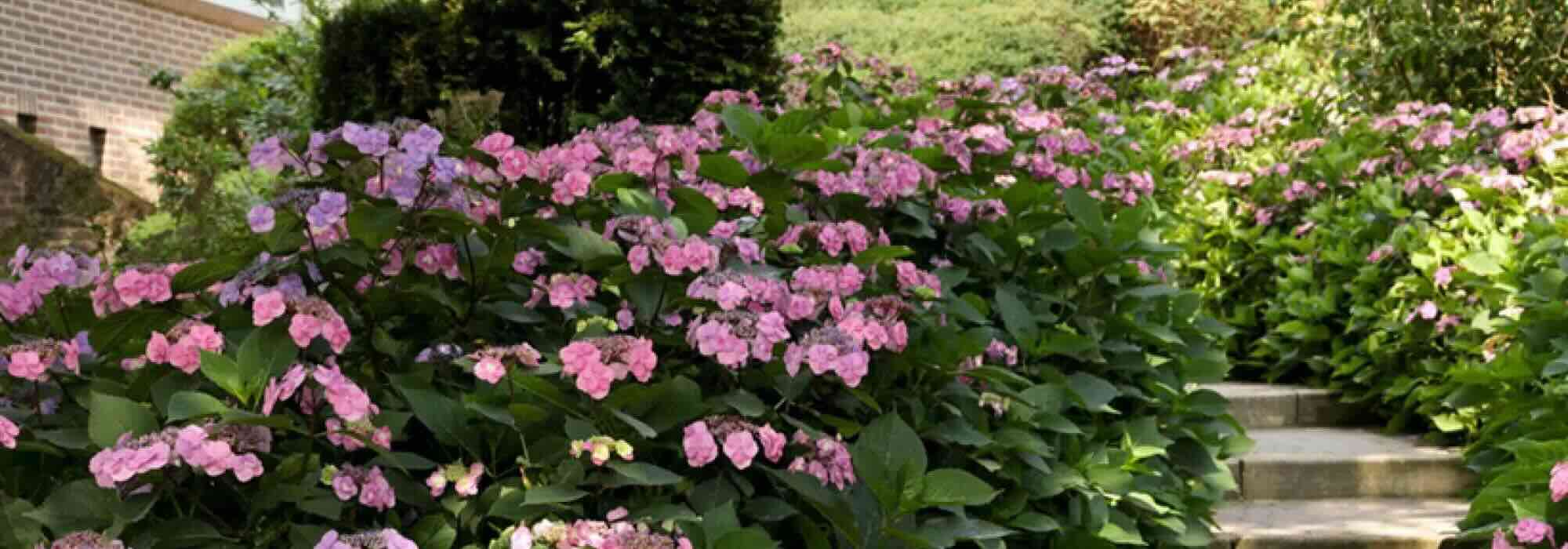
Borders, slopes, edges: which ground-cover bushes for partial shade?
Selection of ideal varieties
Contents
Understanding Partial Shade and Its Specificities
Partial shade is an intermediate condition between full sun and full shade. Unlike dense shade, where little light penetrates, or full sun which exposes plants to strong radiation, partial shade offers a balance between these two extremes.
What is Partial Shade?
Partial shade is defined by indirect or dappled sunlight, often in the morning or late afternoon. It can also correspond to filtered light through sparse foliage, such as under trees or near a wall that reflects light.
In a garden, partial shade occurs in several situations:
- Under deciduous trees or those with sparse foliage, where sunlight passes intermittently through the branches.
- Along an east- or west-facing wall, receiving sunlight for only part of the day.
- In the partial shade of a building, where indirect light is sufficient for the growth of certain plants.
Dry Partial Shade vs. Moist Partial Shade: Different Conditions
Not all partially shaded areas have the same characteristics, and the choice of ground-cover bushes must account for these variations.
- Dry partial shade:
- Typically found under mature trees with dense root systems, where water is quickly absorbed.
- Soils here are often poor, with significant root competition.
- Bushes suited to these conditions must be resistant to water stress.
- Moist partial shade:
- Located at the base of east-facing walls or along woodland edges, where moisture is better retained.
- The soil is usually more fertile, richer in humus, and retains water more effectively.
- These conditions are ideal for bushes that appreciate coolness and well-drained soil.
Why Do Some Bushes Prefer Partial Shade?
Unlike many plants that tolerate partial shade by default but prefer full sun, some plants thrive in it and reveal their full potential there.
- Gentle light promotes denser foliage: Some bushes develop lusher, more colourful foliage in partial shade than in full sun.
- Less water stress: Many ground-cover bushes that prefer partial shade thrive in cool, moist soil, avoiding the scorching or drying out they might suffer in full sun.
- More balanced flowering: Some bushes, like small dwarf rhododendrons, flower better in partial shade, as too much light can shorten their flowering period.
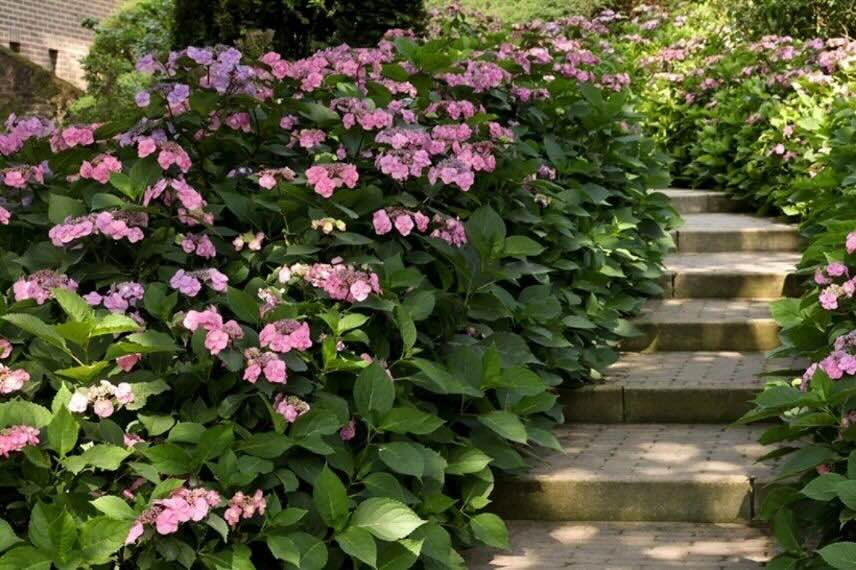
Partial shade, gentler than full sun, is ideal for many bushes, such as this Hydrangea serrata ‘Summer Glow’
The Best Groundcover Bushes for Partial Shade
Here is a selection of ground-covering bushes that truly thrive in partial shade, grouped according to their strengths: evergreen foliage, decorative flowering, and rapid ground coverage.
For dense, evergreen foliage
These bushes provide year-round plant coverage, ideal for suppressing weeds and structuring a shaded area with minimal maintenance.
- Rubus tricolor: This ornamental bramble, often overlooked, is a vigorous, fast-growing, thornless ground cover. Its dark green, glossy, slightly crinkled evergreen foliage adds a striking decorative effect. It spreads quickly, forming a dense mat perfect for covering large areas in partial shade. In late summer, it produces small edible orange berries, attracting wildlife. Hardy and low-maintenance, it thrives in moist, well-drained soil.
- Prunus laurocerasus ‘Mount Vernon’: This dwarf cherry laurel variety excels in partially shaded areas. Its thick, evergreen foliage forms a uniform, cold-resistant cover. Perfect for areas beneath trees or along pathways, it creates a permanent structure with little upkeep. Tolerates moderately dry soils.
- Ilex crenata ‘Green Lustre’: This dwarf Japanese holly, with a spreading rather than upright growth habit, offers an excellent alternative to boxwood in partial shade. Its fine, glossy evergreen foliage adds elegance to borders and spaces beneath large trees. Highly resilient, it withstands light pruning and thrives in moist, neutral to slightly acidic soil.
For decorative flowering in partial shade
These bushes bring colour in spring and summer, while being perfectly suited to moderate light conditions.
- Dwarf rhododendrons: Ideal as ground cover beneath light tree canopies or woodland edges, their evergreen foliage provides structure, and their spring flowering is spectacular, with clusters of pale pink, white, or mauve flowers. These bushes prefer moist, well-drained, acidic soil and perform best in bright partial shade. Some cultivars tolerate lime or prefer more sun.
- Hydrangea serrata: This Japanese hydrangea is subtler than its cousin Hydrangea macrophylla. Its delicate blooms, in blue or pink hues depending on soil acidity, brighten beds from June to September. It prefers moist, humus-rich soil and benefits from summer mulching to retain moisture. Its low, rounded habit makes it perfect for covering soil beneath taller bushes.
- Kalmia polifolia: This low-growing, evergreen bush thrives in cool, damp partial shade. Its spring blooms of pink to violet bell-shaped flowers add refined colour to woodland settings. It prefers acidic, well-drained soil, and its blue-green foliage remains attractive year-round.
Deciduous bushes valued for their versatility
- Symphoricarpos x chenaultii ‘Hancock’: A true shrubby ground cover, this fast-growing plant forms a dense mat that suppresses weeds. Highly cold-resistant and tolerant of poor soils and challenging conditions, even in root-filled ground. Its matte green foliage is deciduous, but in autumn it bears decorative pink berries that persist into winter, attracting birds. Ideal for light woodland areas.
- Lonicera pileata: This creeping honeysuckle stands out for its spreading, compact habit, forming a dense mat of semi-evergreen, glossy green foliage. Very hardy, it prefers moderately moist soils, even chalky ones. Often used to stabilise slopes or beneath trees where few plants thrive. Requires only light annual pruning to maintain shape.
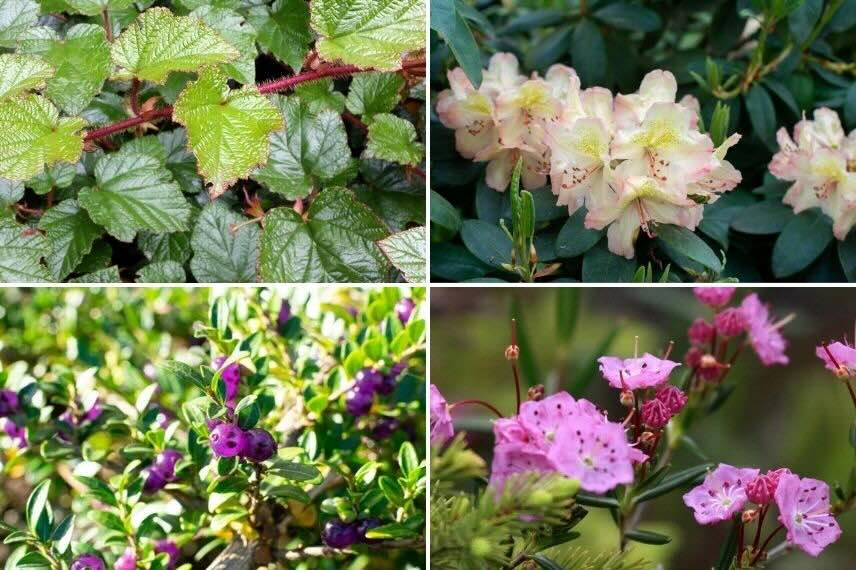
The striking foliage of Rubus tricolor, the flowers of dwarf rhododendrons and Kalmia polifolia, the decorative berries of Lonicera pileata
Care and growing advice for these bushes
Planting: Establishing Your Bushes for Optimal Growth
Best Time to Plant
- Autumn: Ideal for allowing the roots to establish well before the following summer.
- Spring: Possible if watering is carefully monitored initially.
Spacing and Planting Density
- For quick ground-cover effect, space young plants approximately 50 cm to 1 m apart, depending on the species’ growth rate and expected development.
- Planting in staggered rows rather than straight lines helps achieve a more homogeneous blanket bog more quickly.
Soil Preparation
- In dry soil: Add compost and a thick mulch to retain moisture.
- In heavy or compacted soil: Lighten with compost or leaf mould to improve drainage.
- Under trees: Dig a hole wider than deep to help roots establish despite root competition.
Watering: Adapting to Soil Type
Regular Watering in the First Year
- Essential for the bush to develop a strong root system.
Watering After Establishment
- Generally, no watering needed in damp partial shade, except during prolonged drought.
- For bushes in dry partial shade, occasional summer watering may be beneficial.
Pruning and Routine Maintenance
Light Pruning to Maintain Shape
- Most ground-cover bushes require little to no pruning once established.
- Light pruning in late winter encourages branching and thickens foliage.
Maintenance
- An application of compost or mulch in autumn enhances soil fertility and protects roots from cold.
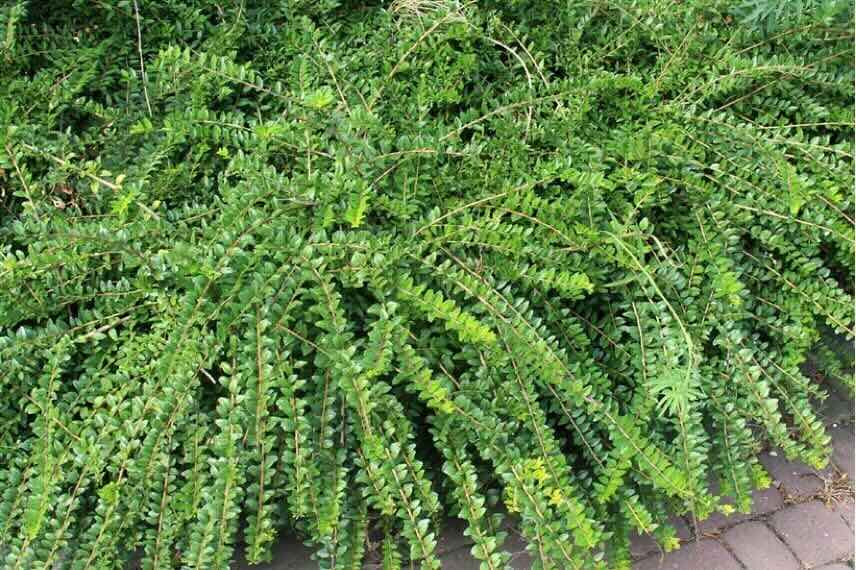
Partial-shade ground-cover bushes are generally hardy and low-maintenance
- Subscribe!
- Contents
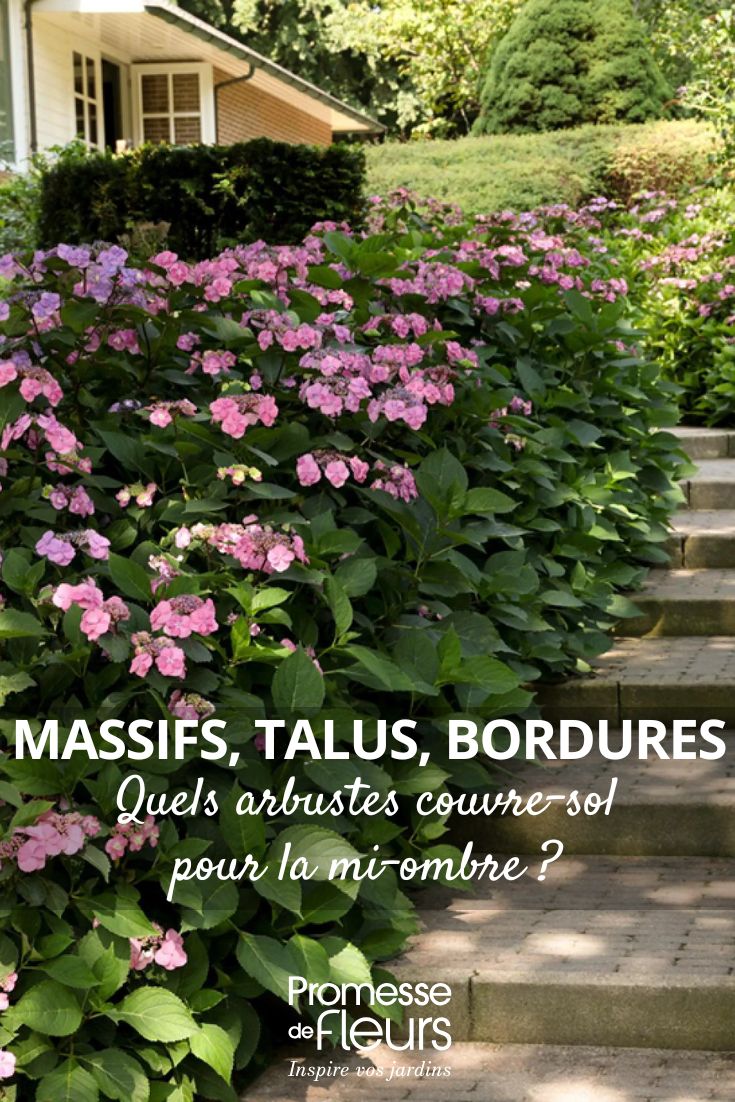































Comments